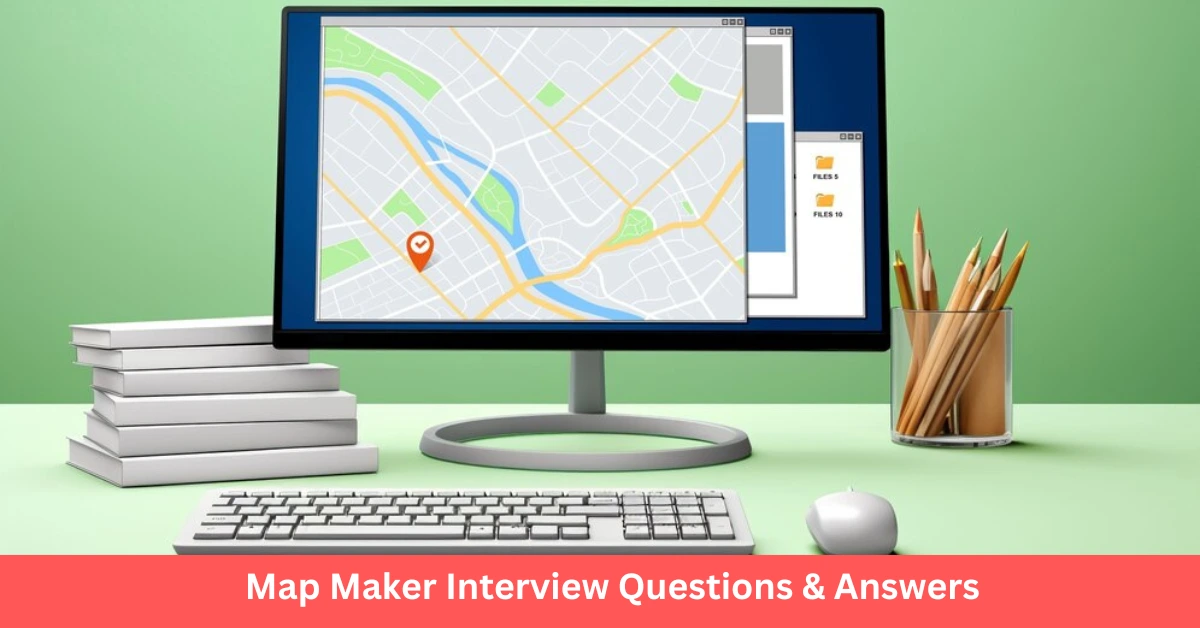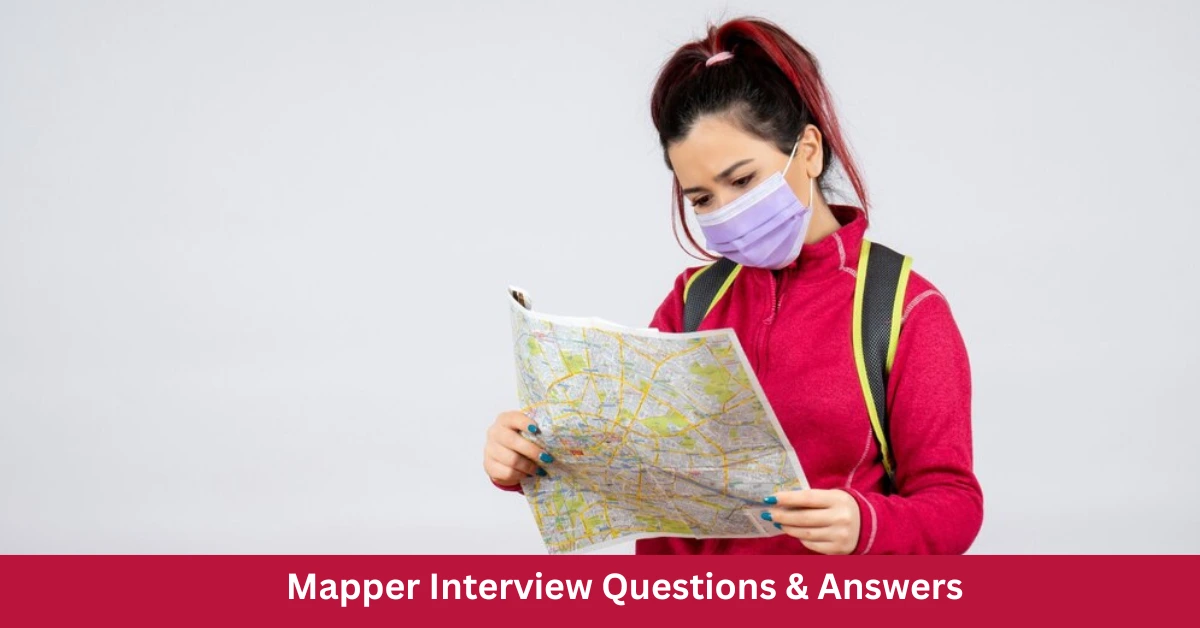Top 15 Map Maker Interview Questions & Answers
Map-making, or cartography, is an essential skill in geospatial science, enabling the visualization of geographic data for various applications. As a Map Maker, you need to demonstrate technical expertise in GIS software, spatial data, and map design principles. Here are the top 15 map maker interview questions and answers to help you prepare effectively. 15 Map Maker Interview Questions & Answers Here’s a comprehensive list of 15 Map Maker Interview Questions & Answers along with detailed answers to help you prepare and impress your interviewers. 1. What is the role of a map maker? Answer: A map maker, or cartographer, designs maps by interpreting and visualizing spatial data. Their role involves analyzing geographic data, ensuring accuracy, and creating maps for applications like urban planning, navigation, and environmental studies. 2. What tools and software do you use for creating maps? Answer: I use: GIS software: ArcGIS, QGIS. Remote sensing tools: ERDAS IMAGINE, ENVI. Design tools: Adobe Illustrator, CorelDRAW for cartographic design. Mapping platforms: Google Maps API, Mapbox. 3. How do you ensure the accuracy of your maps? Answer: Accuracy is ensured through: Validating data with GPS or field surveys. Using reliable data sources like government agencies or satellite providers. Regularly updating maps to reflect real-world changes. Related Article: Top 15 Field Map Editor Interview Questions & Answers 4. What is the difference between a topographic and a thematic map? Answer: Topographic maps depict physical features like elevation, terrain, and water bodies. Thematic maps focus on specific themes, such as population density or climate patterns. 5. What are map projections, and why are they important? Answer: Map projections are methods of representing the Earth’s 3D surface on a 2D plane. They are crucial because they affect the accuracy of distance, shape, area, and direction on maps. Common projections include Mercator, Lambert Conformal Conic, and Robinson. Related Article: Top 15 Mapper Interview Questions & Answers 6. How do you handle large datasets when creating maps? Answer: I manage large datasets by: Filtering and preprocessing data to reduce size. Using cloud-based GIS platforms like Google Earth Engine. Employing geodatabases like PostgreSQL with PostGIS. 7. What is your experience with spatial data formats? Answer: I am proficient in: Vector formats: Shapefiles, GeoJSON, KML. Raster formats: TIFF, JPEG, PNG. Database formats: SQL, GeoPackage. Related Article: Top 15 LIDAR Technician Interview Questions & Answers 8. How do you design user-friendly and visually appealing maps? Answer: I follow cartographic principles such as: Using appropriate colors and symbols. Maintaining a clear legend and scale. Avoiding clutter and focusing on the map’s purpose. 9. Can you explain the concept of scale in map-making? Answer: Scale represents the relationship between map distance and real-world distance. It is expressed as a ratio (e.g., 1:50,000). Larger scales show more detail, while smaller scales cover broader areas. Related Article: Top 15 Cartography Technician Interview Questions and Answers 10. What is georeferencing, and why is it important? Answer: Georeferencing aligns spatial data to a coordinate system, enabling accurate representation on maps. It’s essential for integrating various datasets and ensuring spatial accuracy. 11. What challenges have you faced in map-making projects, and how did you overcome them? Answer: Challenges include inconsistent data formats and missing information. I overcame these by: Applying data cleaning techniques. Collaborating with data providers for accurate inputs. Using interpolation to estimate missing values. 12. What is the difference between GIS and cartography? Answer: GIS involves collecting, analyzing, and managing spatial data. Cartography focuses on visualizing this data effectively through map design. Related Article: Top 15 Cadastral Mapper Interview Questions 13. How do you stay updated with advancements in map-making? Answer: I keep up by: Attending geospatial conferences and webinars. Following industry blogs and journals. Learning new tools and techniques through online courses. 14. What is the importance of metadata in map-making? Answer: Metadata provides essential details about the data source, accuracy, date, and coordinate system. It ensures transparency and helps users understand the reliability of the map. Related Article: 15 Cartographic Designer Interview Questions 15. Can you describe a successful map-making project you worked on? Answer: In one project, I developed a land-use map for urban planning using satellite imagery and GIS tools. The map guided zoning decisions and optimized resource allocation for the city. Conclusion Map makers are essential in bridging the gap between complex spatial data and actionable insights. By preparing these top 15 Map Maker Interview questions and answers, you can showcase your technical skills and creative approach to designing maps. Stay tuned to our blog for more resources to boost your geospatial career!

